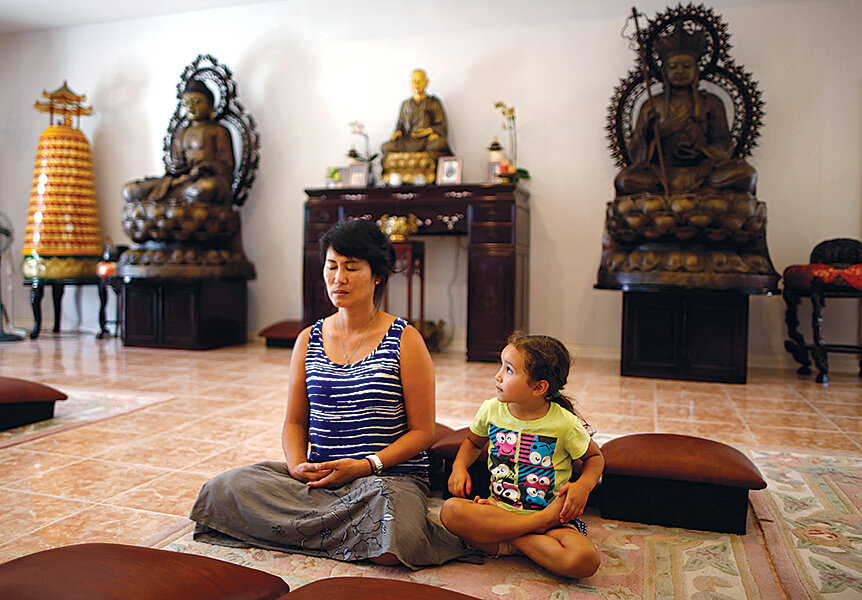Finding faith's common core
Loading...
You’ve seen the bumper sticker: the cross, the crescent moon, the Star of David, and other symbols spelling out “Coexist.” Nice design. Excellent message. It could be tweaked to include even more belief systems and perhaps more shades of thoughtful unbelief as well. Coexistence, after all, is about acceptance, an acknowledgment that the world is bigger than one faith and one tradition. Argument and force will never change 7 billion hearts.
Not that humans haven’t tried. But after centuries of religious war, persecution, discrimination, and condemnation, it is fairly clear that no single belief system is going to prevail. Different faiths – and even the faith of no faith – must coexist because people will always be different and faith is always arrived at in different ways. How can anyone dictate what all those curious hearts – different between brother and sister, different from Monday to Tuesday, different between nation and nation – believe? How can the meaning and purpose of life be bottled under one brand name?
Faith, after all, is not supposed to wag its finger. It is supposed to be the unseen force that enriches, elevates, unites. Often it does. But faiths still also divide and demean. That has been a known drawback of religion since the dawn of time, which is why prophets, mystics, and religious reformers for just as long have attempted to locate a common core in the hopes of eliminating denominational conflict.
The core is there – the conscience, the I am, the universal Soul – yet denominations endure. Denominations provide comfort and community. They claim the true path and demand loyalty. Most are fierce about self-preservation. They are not about to be eliminated. Tolerance and empathy are not unusual, however. They are more like the norm. Enlightened leaders have practiced coexistence at least since Ashoka the Great in the 3rd century BC. Coexistence, in fact, is the steady state among people of different religions except during spasms of intolerance – inquisitions, jihads, pogroms, ethnic cleansing – which usually have less to do with belief than with the will to exert power.
In modern times, the interfaith movement is working to find common ground in the essentials of love, peace, and justice. There is also a more intimate interfaith movement under way. In a Monitor cover story (click here), Stephanie Hanes looks at the growing number of mixed marriages. These are not just temporary expedients that will ultimately be resolved by the dominance of one religion. Increasingly, husbands and wives are seeking a deeper, generic set of values that can resist family pressure and the tug of tradition but still quench their thirst for meaning.
If there is a time of year when coexistence shines, it is now, in the season of gratitude and giving. We can be grateful to a deity of whatever name or just be grateful for life, love, family, friendship. When we are gathered around a Thanksgiving table – whether drawn together by blood, belief, companionship, or neighborliness – we are the living, breathing, talking, joking, dining embodiment of coexistence.
John Yemma is editor-at-large of the Monitor. He can be reached at yemma@csmonitor.com.






